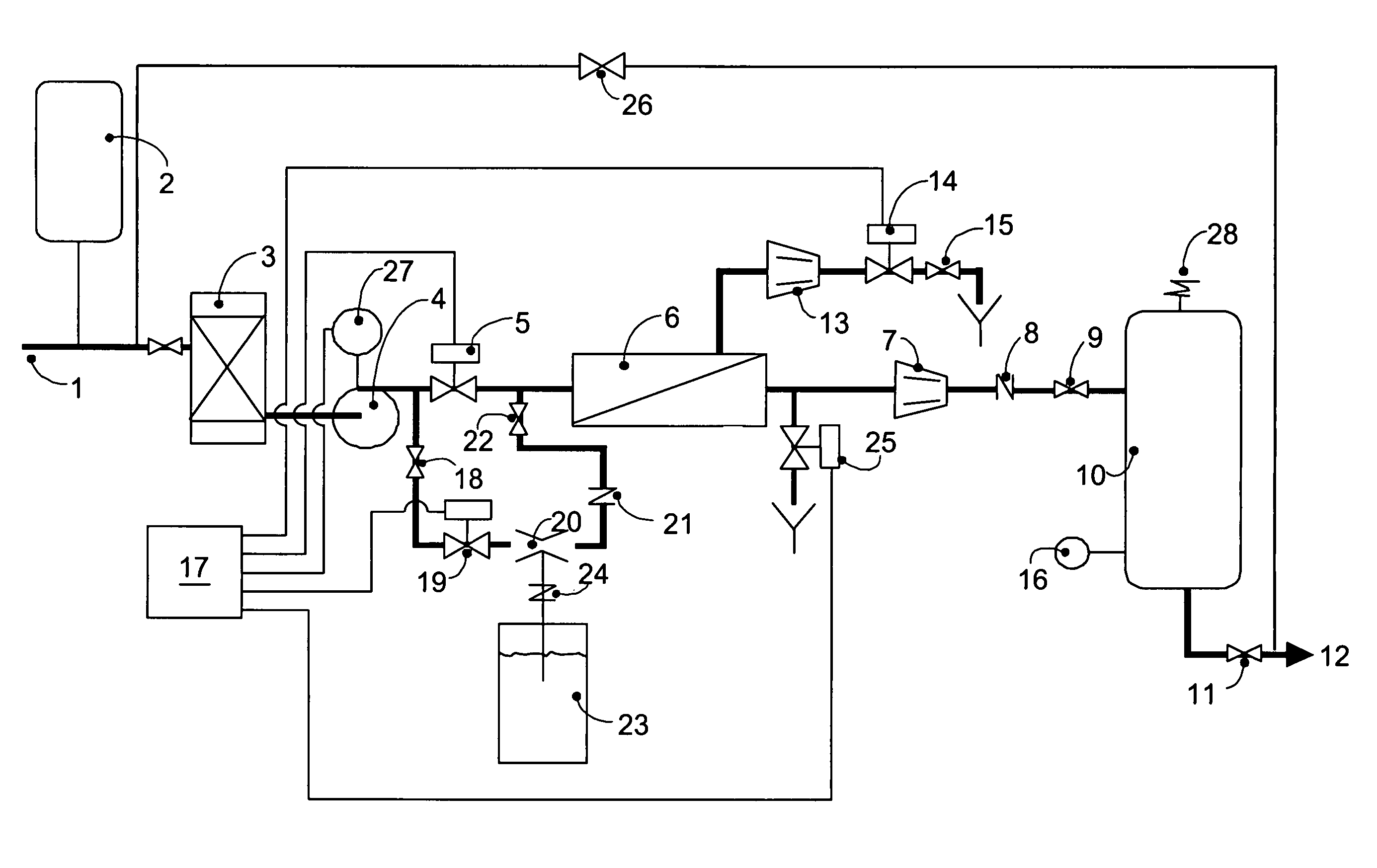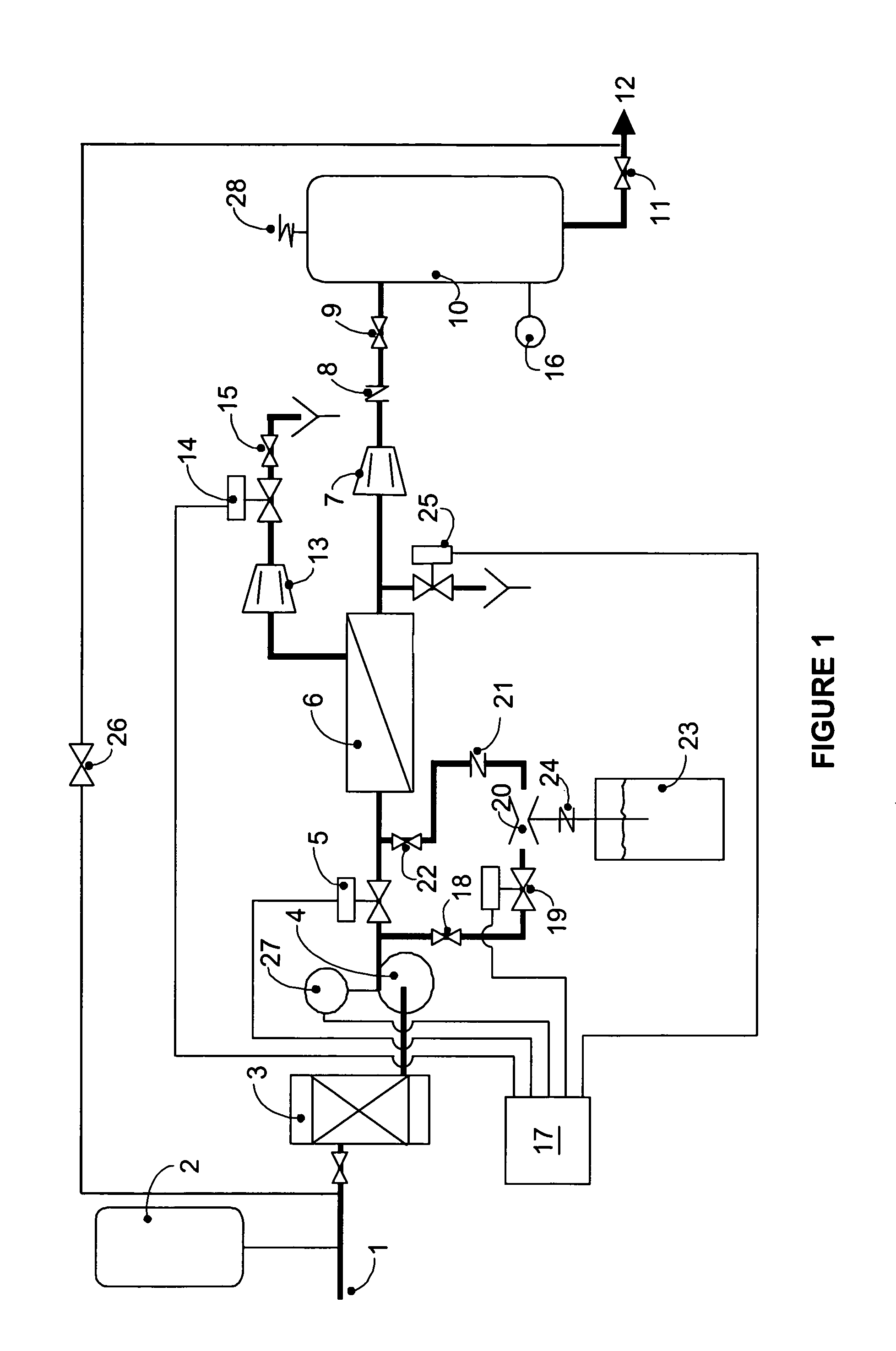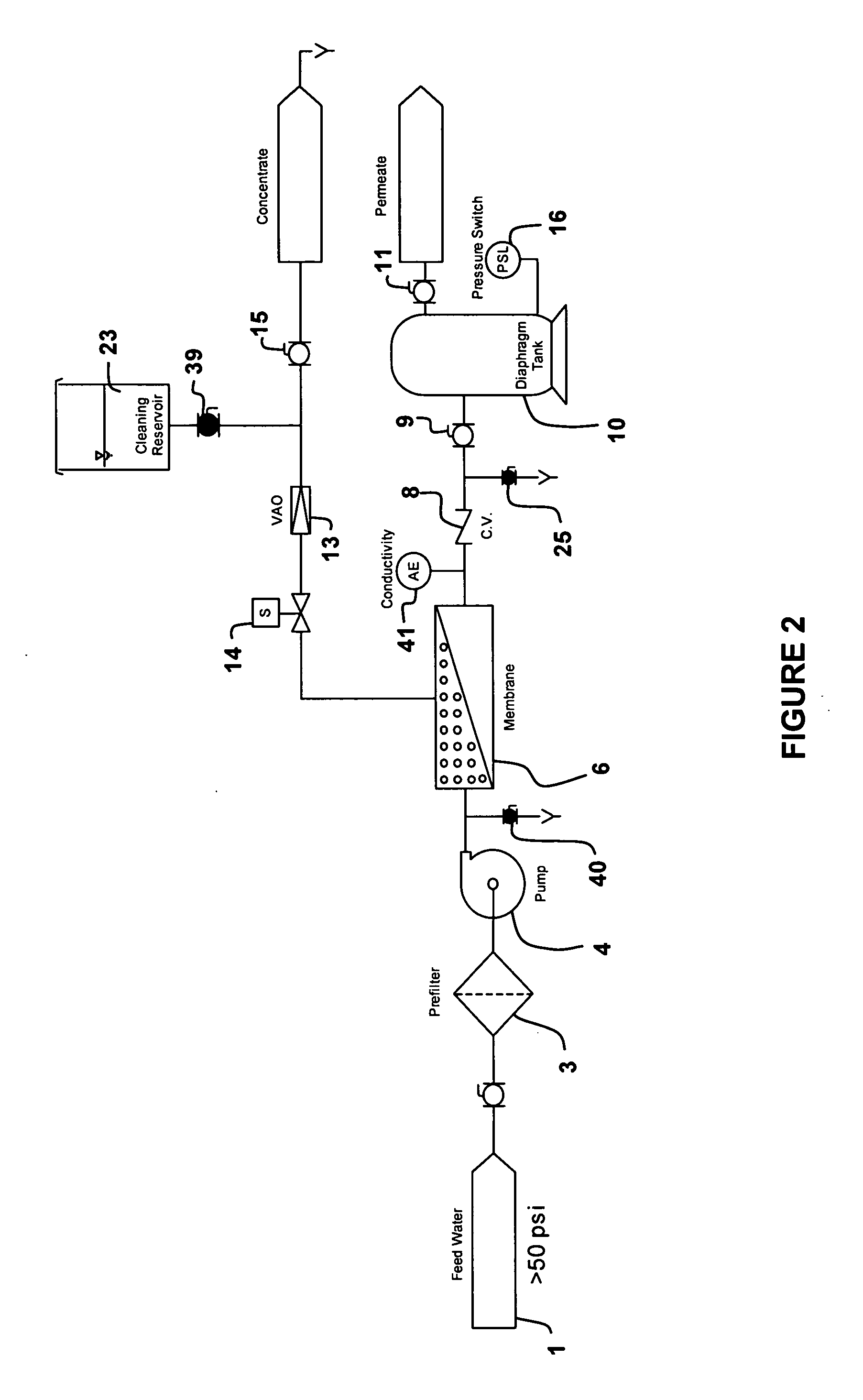Nanofiltration system for water softening with internally staged spiral wound modules
a technology of filtration system and spiral wound module, which is applied in the direction of membranes, reverse osmosis, treatment control/steering, etc., can solve the problems of ineffective removal of heavy metals, arsenic and other impurities, sodium addition to water, etc., and achieves low feed velocities, easy and inexpensive modification, and low fouling rate
- Summary
- Abstract
- Description
- Claims
- Application Information
AI Technical Summary
Benefits of technology
Problems solved by technology
Method used
Image
Examples
example # 1
Example #1
Long-Term Operation with Daily Cleaning
[0057] Experimental Conditions:
Feed Source:Raw ZENON Well WaterTotal Hardness (Feed) =400 mg / L (as CaCO3)Permeation Rate =9-12 L / minFlux =20-28 LmhRecovery =80-90%Exit Velocity =0.0381-0.0606 m / sTemperature =20-26° C.Cleaning Frequency =2.7 hrs (one equivalent day of home use)Initial Permeability =8.2 Lmh / barFinal Permeability =7.0 Lmh / barFeed / concentrate velocity =0.125-0.19 ft / s
[0058] These modules A, B, C, were arranged in series with A upstream of B and B upstream of C. Together, these modules have 8 stages.
[0059] Membrane Specifications:
ModifiedTo Have #Originalof InternalSurface AreaModuleManufacturerChemistryStages(m2)Element ADow - FilmTechNF-270 / 404017.618Element BDow - FilmTechNF-270 / 404037.455Element CDow - FilmTechNF-270 / 404057.037
[0060] This demonstrates that over a 2 months and 9 days of operation (equivalent to an entire year of water supply to a single house) at recoveries of 80-90%, the permeability dropped only...
example # 2
Example #2
Membrane Cleaning Cycle
[0061] Cleaning Cycle involves 3 stages of operation:
[0062] 1. Flush (4.5 min)—cleaning chemical is dosed into feed stream via an eductor (Mazzei Injector Corp. Model# 384). Concentrated MC-1 90 g / L is injected and diluted to bring the feed pH down to 2.8.
[0063] 2. Soak (60 min)—flow is stopped. Chemical is held within the membrane elements for 1 hour.
[0064] 3. Rinse (5 min)—feed is reintroduced (without chemical injection) and all effluent is sent to the drain for the entire rinse time to remove MC-1 from the system.
[0065] Permeability of membranes increases after each cleaning cycle and decreases in between cleaning cycles as the membranes foul. Cleaning frequencies of 2.7 hrs (one equivalent day of home use), 9 hrs, 18 hrs and 23 hrs (equivalent to 8.5 days of home use) were used with results showing full recovery of permeability in each case (see FIG. 3).
example 3
[0066] A FilmTech NF-270 / 4040 module modified to have 3 internal stages was run at a flux of 76 Lmh to test the effect of process conditions on permeate quality.
[0067] Experimental Conditions:
Feed Source:Raw ZENON Well WaterTotal Hardness (Feed) =400 mg / L (as CaCO3)Feed Flow =10.45 L / minPermeation rate =9.4 L / minFlux =76 LmhRecovery =90%Transmembrane Pressure =890 kPaTemperature =32° C.Feed / concentrate side velocity =0.08-0.328 ft / s
[0068] Permeate quality and rejection were as follows:
Permeate total hardness: 144 mg / L (as CaCO3)
Total hardness rejection: 64.7%
[0069] This demonstrates that the system achieves substantial improvement in permeate quality over feed under preferred operating conditions.
PUM
 Login to View More
Login to View More Abstract
Description
Claims
Application Information
 Login to View More
Login to View More - R&D
- Intellectual Property
- Life Sciences
- Materials
- Tech Scout
- Unparalleled Data Quality
- Higher Quality Content
- 60% Fewer Hallucinations
Browse by: Latest US Patents, China's latest patents, Technical Efficacy Thesaurus, Application Domain, Technology Topic, Popular Technical Reports.
© 2025 PatSnap. All rights reserved.Legal|Privacy policy|Modern Slavery Act Transparency Statement|Sitemap|About US| Contact US: help@patsnap.com



